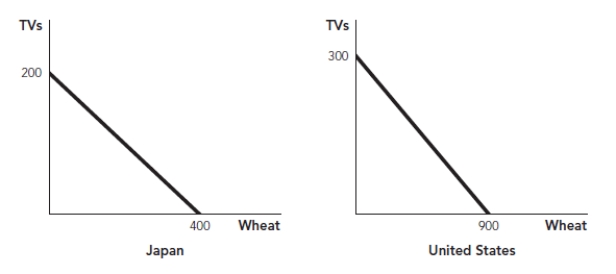Multiple Choice
Use the following to answer questions:
Figure: Comparative Advantage 
-(Figure: Comparative Advantage) The figure illustrates both the U.S. and Japanese production possibilities frontiers for TVs and wheat. Based on this information, which of the following is TRUE?
A) The opportunity cost of producing a TV in the United States is 1/3 of a bushel of wheat.
B) The opportunity cost of producing a TV in the United States is 900 bushels of wheat.
C) The opportunity cost of producing a TV in Japan is 2 bushels of wheat.
D) The opportunity cost of producing a bushel of wheat in Japan is 2 TVs.
Correct Answer:

Verified
Correct Answer:
Verified
Q200: Which of the following is typically a
Q201: Without trade, specialization is impractical.
Q202: Everyone, from the most to the least
Q203: Because Chinese wages are much lower than
Q204: Utilizing comparative advantage can best be exemplified
Q206: Adam Smith:<br>A) believed that trade in local
Q207: Gains from trade are largest when two
Q208: The production possibilities frontier's negative slope illustrates
Q209: Two persons each produce two identical goods.
Q210: A country has a comparative advantage in